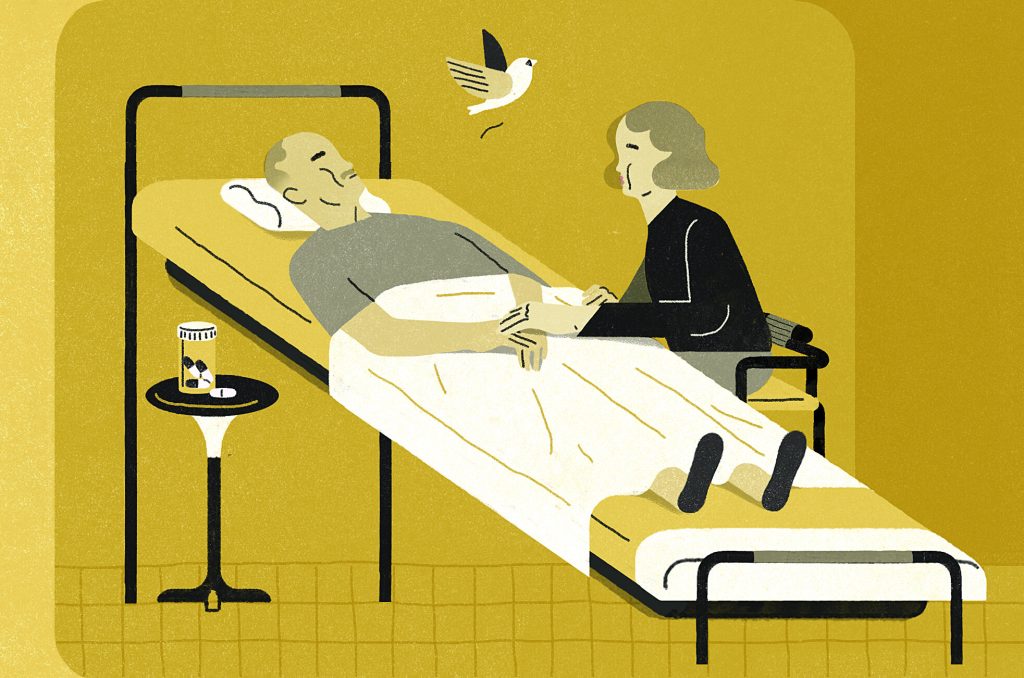
While Americans and Canadians share many cultural values, there is one major life issue that does not seem to cross the border: the accessibility of medical aid in dying.
A 2016 law in Canada legalized medical assistance in dying (MAID); polls show a majority of Canadians support having that option.
The federal legislation in Canada has expanded to include medically assisted death for terminally ill patients. Canada is one of three countries that gives patients with chronic painful conditions that are not life-threatening the option for medically assisted dying.
By March of 2024, Canada’s MAID laws — originally designed for people with terminal illness — will allow people with some mental disorders and disabilities to be eligible for medically assisted dying as well.
The story in the U.S. is quite different. There is no national law, and only 10 states allow medically assisted death. The movement to legalize medically assisted death does have a solid support base, according to polling. And in 1997, Oregon was the first state to make it legal for terminally ill patients.
In the U.S., there has been a recent bump in legislation (nine bills have been introduced in various states across the U.S. this legislative season). But in the more than 25 years since Oregon’s law, only 10 other states have put laws allowing medically assisted death in place — and they’re, across the board, significantly stricter than what Canada has.
Even though the two countries’ healthcare systems share similarities, there is a stark difference when it comes to end-of-life decisions. Experts say it comes down to two things: a U.S. culture heavily influenced by religion and the different ways these laws came about in each country.
A stronger, more conservative religious influence in the U.S.
Opposition to aid in dying laws around the world primarily comes from religious organizations. But because of the U.S.’s specific religious landscape, that particular pushback is felt more strongly here than in other places.
Jocelyn Downie, law professor at Dalhousie University and an expert on end-of-life law, speculated that because the U.S. has a such a large evangelical presence (she uses “evangelical” in the colloquial sense and not in the technical sense), religion and religious debate is hyperactive in the political domain. “Religion just plays an oversized role in politics in the United States that it just doesn’t play [in Canada],” she said.
To this point, Trudo Lemmens, professor and Scholl chair in health law and policy at the University of Toronto, said that Canada is more secular in its discourse than the U.S., adding that in the province of Quebec, specifically, there exists a strong anti-religion sentiment, rooted in the fact that Quebec used to be a very conservative Catholic province.
The Catholic argument — which Peg Sandeen, CEO of the nonprofit advocacy group Death with Dignity, said is the loudest opposition to this legislation globally — is that individuals do not have the authority to determine when life ends. Sandeen singled out the Catholic Church specifically because she explained that “they are willing to spend resources in a political environment to move the needle.”
In 2012, Death with Dignity ran a ballot initiative in the state of Massachusetts, and opponents of it spent $7 million against the initiative. And because every dollar must be reported to the state, Sandeen said, her organization found that $4.5 million of that $7 million came from institutional Catholic sources.
A different process of medically assisted death
Arguably the most significant difference, according to Sandeen, is that euthanasia is illegal in the U.S. but not in Canada, which means that in the U.S., the lethal medication must be self-administered.
This also might partially explain why medical aid in dying has taken off in Canada, said Lemmens.
“In the United States, in order to qualify, one of the bedrocks of every state is that you have to be able to self-administer [the lethal medication]” said Sandeen. “And in Canada, they have the option of taking it themselves or a euthanasia provision where a doctor would inject them.”
The overwhelming majority of people who use medical aid in dying in Canada, Sandeen explained, choose the euthanasia route, which is something a physician would actually be prosecuted for in the U.S.
It’s important to note, Lemmens said, that it’s often the case that people who need to self-administer the drug usually end up not taking the drug. “People often simply feel reassured, they take the medication home, and they never use it,” he explained.
Lemmens added that there is something particular about the dynamic between a doctor and a patient: If a doctor administers the injection, a patient is less likely to back out. “It becomes part of the medical system,” he said. “So, I think that’s one thing that leads to higher numbers [of medical assisted dying].”
National laws in Canada pave the way for more acceptance
A key component to the story of Canada’s more expansive and more popular aid in dying laws is that Canada’s law came about via decision by the Supreme Court of Canada. In the U.S., by contrast, there is no federal right to aid in dying, so the legislation came about through citizen action, which manifested as a grassroots state-by-state approach, explained Downie.
